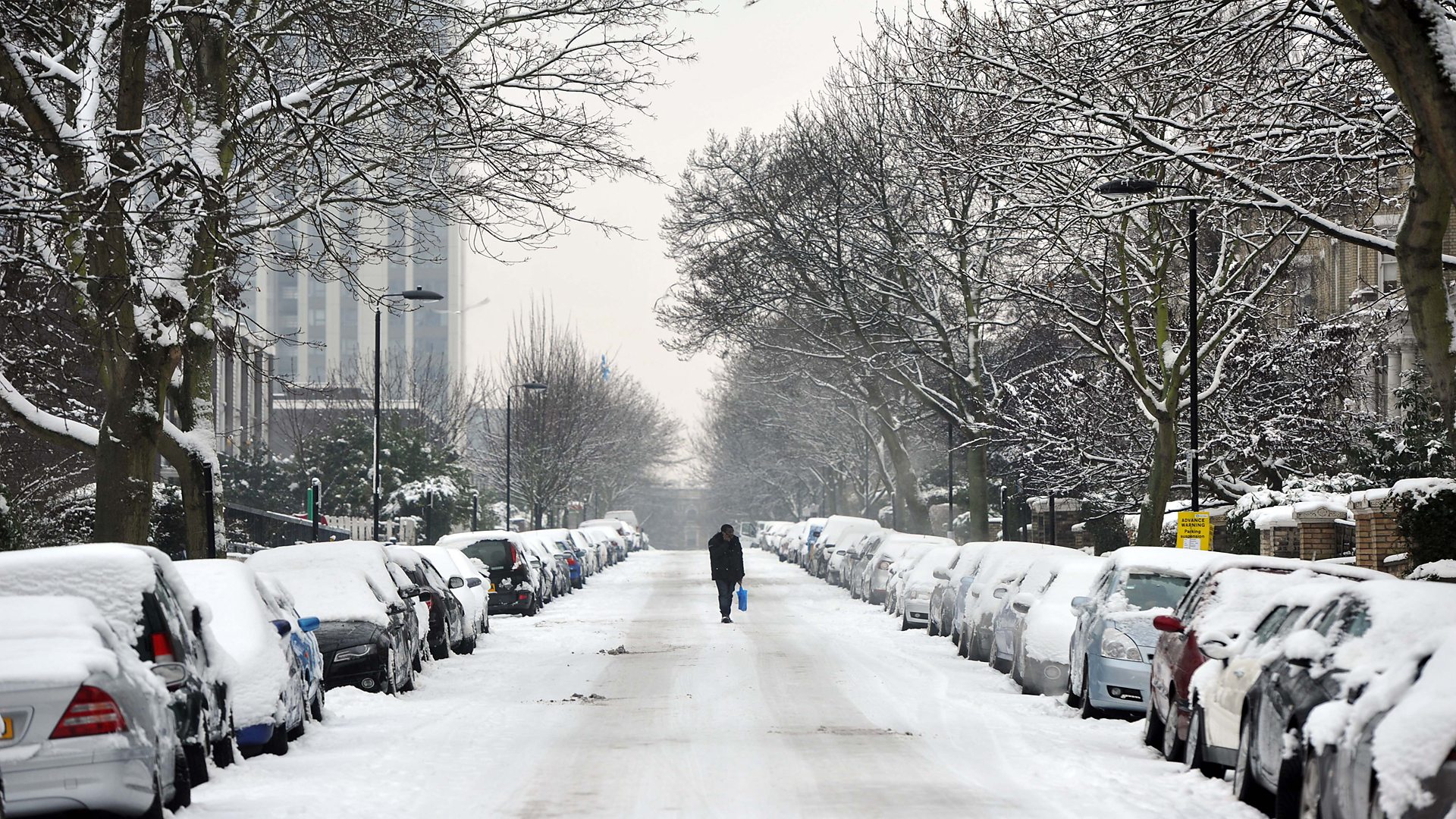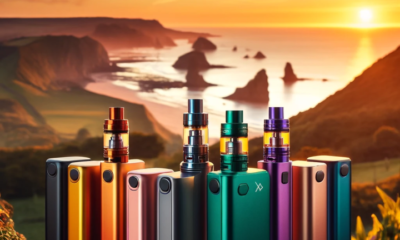Life style
Surviving Winter: Tips for Staying Safe and Warm

As the days grow shorter and the temperatures drop, winter brings its own set of challenges. While it’s a season of cozy nights by the fire and picturesque snowscapes, it also poses risks to our health and safety. From icy roads to frostbite-inducing temperatures, being prepared and vigilant is key to navigating winter safely. In this blog post, we’ll explore some essential tips for staying safe and warm during the colder months.
Understanding Winter Hazards
Before delving into specific tips, it’s important to understand the hazards associated with winter weather. Snow and ice can create slippery conditions, leading to slips, trips, and falls. Cold temperatures can cause hypothermia and frostbite if proper precautions aren’t taken. Additionally, winter storms can disrupt transportation and power supply, leaving communities isolated and vulnerable. By recognizing these dangers, we can better prepare ourselves to face them head-on.
Tips for Staying Safe and Warm
- Dress in Layers: Layering is key to staying warm in cold weather. Start with a moisture-wicking base layer to keep sweat away from your skin. Add insulating layers such as fleece or wool, followed by a windproof and waterproof outer layer. Don’t forget to wear a hat, gloves, and scarf to protect your extremities from heat loss.
- Stay Dry: Wet clothing can quickly sap away body heat, increasing the risk of hypothermia. Be sure to wear waterproof clothing and footwear when venturing out into the snow or rain. If your clothes do get wet, change into dry ones as soon as possible.
- Keep Moving: Physical activity generates heat, so keep moving to stay warm. Take regular breaks during outdoor activities to warm up indoors. If you’re shoveling snow or engaging in other strenuous tasks, pace yourself and listen to your body to avoid overexertion.
- Stay Hydrated and Nourished: Cold weather can suppress thirst and appetite, but staying hydrated and well-fed is crucial for maintaining body heat. Drink plenty of fluids and eat high-energy foods to fuel your body’s internal furnace.
- Protect Your Home: Prepare your home for winter to ensure warmth and comfort. Enhance insulation around windows and doors, seal any drafts, and regularly maintain your heating system. Additionally, have a secondary heating option and emergency provisions ready for potential power outages. And don’t forget to include snow removal in your plans for Draper’s winter weather.
- Practice Fire Safety: If you’re using a fireplace, wood stove, or space heater to stay warm, be mindful of fire safety. Keep flammable materials away from heat sources, use screens to prevent sparks, and never leave fires unattended.
- Drive Safely: Winter driving requires extra caution. Slow down, increase the following distance, and brake gently to avoid skidding on icy roads. Keep an emergency kit in your car with essentials such as blankets, food, water, a flashlight, and a shovel.
- Watch for Signs of Hypothermia and Frostbite: Learn to recognize the symptoms of hypothermia (confusion, shivering, slurred speech) and frostbite (numbness, tingling, pale skin). Seek medical attention immediately if you or someone else shows signs of cold-related injuries.
- Stay Informed: Pay attention to weather forecasts and road conditions before traveling. Stay updated on emergency alerts and advisories issued by local authorities. Plan your activities accordingly and avoid unnecessary risks during severe weather events.
- Look Out for Others: Check on elderly neighbors, young children, and pets during cold weather. Offer assistance to those who may need help shoveling snow or running errands. By working together as a community, we can ensure that everyone stays safe and warm during the winter months.
In Conclusion
Winter may present its challenges, but with the right preparation and precautions, you can stay safe and warm no matter how cold it gets. By dressing appropriately, staying dry, staying active, and being mindful of potential hazards, you can enjoy all that winter has to offer while minimizing the risks to your health and well-being. So bundle up, stay alert, and embrace the beauty of the season while staying safe and warm.
Life style
The Perfect Guide to Choosing Anniversary Flowers

Introduction
Anniversaries are special milestones that celebrate love, commitment, and cherished memories. One of the most timeless and heartfelt ways to express your affection is through flowers. Whether it’s your first anniversary or your fiftieth, the right floral arrangement can convey emotions words sometimes can’t. This guide explores the significance of anniversary flowers, popular choices, and tips for selecting the perfect bouquet. We’ll also discuss the convenience of anniversary flowers delivery and how to make your gift even more memorable.
The Significance of Flowers in Anniversary Celebrations
Flowers have been symbols of love and devotion for centuries, with different blooms carrying unique meanings. Opting for anniversary flowers delivery ensures your gift arrives fresh and beautifully arranged, making the occasion even more special.
Key reasons flowers are perfect for anniversaries:
- Romantic Symbolism – Roses, lilies, and tulips represent love and passion.
- Personalized Messages – Different colors convey distinct emotions (red for love, pink for admiration).
- Timeless Elegance – A well-chosen bouquet enhances any celebration.
Whether you’re near or far, having flowers delivered adds a thoughtful touch to your anniversary surprise.
Best Flower Choices for Different Anniversaries
Each anniversary year has traditional and modern floral associations. Here are some ideal picks:
- 1st Anniversary (Paper) – Carnations (symbolizing young love)
- 5th Anniversary (Wood) – Daisies (representing loyalty and simplicity)
- 10th Anniversary (Tin/Aluminum) – Daffodils (symbolizing joy and renewal)
- 25th Anniversary (Silver) – Irises (meaning wisdom and admiration)
- 50th Anniversary (Gold) – Yellow roses (celebrating enduring love)
Matching flowers to the anniversary year adds a meaningful layer to your gift.
Factors to Consider When Choosing Anniversary Flowers
Before selecting a bouquet, keep these aspects in mind:
- Recipient’s Preferences – Favorite flowers or colors make the gift more personal.
- Seasonal Availability – Peonies in spring, sunflowers in summer, etc.
- Arrangement Style – Classic roses, mixed bouquets, or elegant orchids.
- Fragrance – Some flowers, like lilies, have a strong scent, while others are subtle.
A well-considered choice ensures your flowers resonate deeply with your partner.
Why Fresh Flowers for Anniversaries Make the Best Gift
While chocolates and jewelry are great, flowers for anniversaries remain a classic for good reason:
- Instant Emotional Impact – Bright, fresh blooms create an immediate sense of joy.
- Versatility – Suitable for any anniversary, whether casual or grand.
- Customization Options – Add-ons like chocolates, vases, or handwritten notes enhance the gift.
- Symbolic Longevity – Just as love grows, flowers can be preserved as keepsakes.
A beautifully arranged bouquet is a gesture that never goes out of style.
Tips for Preserving Anniversary Flowers
Make your floral gift last longer with these care tips:
- Trim Stems Diagonally – Helps flowers absorb water better.
- Change Water Daily – Prevents bacterial growth.
- Keep Away from Direct Sunlight – Extends freshness.
- Use Flower Food – Packets provided with bouquets help nourish blooms.
For a lasting memory, consider drying petals or pressing them in a frame.
Unique Ways to Present Anniversary Flowers
Go beyond the traditional bouquet with these creative ideas:
- Flower Subscription – Monthly deliveries to keep the celebration ongoing.
- Flower Wall or Petal Path – For a grand romantic gesture.
- Personalized Message-in-a-Bottle – Combine flowers with a heartfelt letter.
- Surprise Delivery at Work – Make their day extra special.
Adding a personal twist makes the gift unforgettable.
Conclusion
Anniversary flowers are more than just a gift—they’re a timeless expression of love. Whether you choose a classic red rose bouquet or a modern mixed arrangement, the right flowers can make your anniversary unforgettable. With the convenience of anniversary flowers delivery, you can surprise your loved one no matter where you are. And when you select the perfect flowers for anniversaries, you’re not just giving a beautiful present—you’re celebrating your journey together in the most heartfelt way. Choose wisely, and let your flowers speak the language of love.
Life style
Rejuvenation Skin Care: Your Guide to Timeless Beauty and Healthy Skin

Introduction
In today’s fast-paced world, maintaining healthy, youthful skin requires professional care and advanced treatments. At Re-juvenation Skin Care Clinic, we combine science-backed techniques with personalized attention to help you achieve your skincare goals. Whether you’re seeking preventive maintenance or transformative results, our classic Re-juvenation Skin Care Clinic approach blends time-tested methods with cutting-edge technology. This comprehensive guide explores our philosophy, services, and what makes professional skin rejuvenation different from at-home routines.
The Re-juvenation Skin Care Clinic Philosophy
Our Re-juvenation Skin Care Clinic operates on three core principles:
Personalized Treatment Plans
- Comprehensive skin analysis
- Custom-blended product formulations
- Condition-specific protocols
Science-Based Approaches
- Medical-grade equipment
- Clinically proven ingredients
- Results-driven methodologies
Holistic Wellness Integration
- Nutritional counseling
- Stress management techniques
- Lifestyle optimization advice
We treat skin as an organ reflecting overall health, not just a surface to be decorated.
Common Skin Concerns We Address
Our clinic specializes in treating:
✔ Aging-Related Issues
- Fine lines and wrinkles
- Loss of elasticity
- Age spots and pigmentation
✔ Environmental Damage
- Sun damage repair
- Pollution protection
- Dehydration reversal
✔ Medical Conditions
- Acne and rosacea
- Eczema and psoriasis
- Scarring and stretch marks
✔ Preventive Maintenance
- Collagen stimulation
- Barrier function strengthening
- Early intervention strategies
Each concern requires specialized treatment protocols for optimal results.
Our Signature Treatment Technologies
We invest in medical-grade equipment for superior outcomes:
Resurfacing Modalities
- Fractional laser treatments
- Medical microdermabrasion
- Chemical peel systems
Stimulation Therapies
- Radiofrequency skin tightening
- Microcurrent facial toning
- LED light therapy
Injection Techniques
- Neuromodulators for dynamic wrinkles
- Dermal fillers for volume restoration
- Mesotherapy for nutrient delivery
All procedures are performed by licensed professionals with extensive training.
The Classic Re-juvenation Skin Care Clinic Experience
Our classic Re-juvenation Skin Care Clinic package includes:
Consultation Process
- Detailed skin mapping
- VISIA complexion analysis
- Lifestyle assessment
Treatment Protocol
- Deep cleansing preparation
- Customized active serums
- Specialized massage techniques
- Targeted mask applications
Post-Treatment Care
- Homecare product recommendations
- Follow-up scheduling
- Progress tracking
This comprehensive approach ensures lasting results beyond the treatment room.
What to Expect During Your Visit
A typical appointment includes:
- Skin Assessment (15-20 minutes)
- Visual examination
- Digital imaging
- Treatment Session (30-90 minutes)
- Cleansing and prep
- Primary procedure
- Soothing applications
- Post-Care Consultation (10-15 minutes)
- Immediate aftercare instructions
- Product recommendations
Most clients notice visible improvements after just 1-3 sessions, with optimal results appearing after a complete treatment series.
Maintaining Results Between Visits
Extend your clinic results with:
✔ Medical-Grade Homecare
- Pharmaceutical-strength retinoids
- Antioxidant serums
- Growth factor formulations
✔ Lifestyle Practices
- SPF 30+ daily application
- Adequate hydration
- Antioxidant-rich diet
✔ Periodic Maintenance
- Monthly facials
- Seasonal peel treatments
- Annual skin assessments
Consistency is key for sustained skin health improvement.
Conclusion
At Re-juvenation Skin Care Clinic, we believe beautiful skin begins with healthy skin. Our classic Re-juvenation Skin Care Clinic methodology combines advanced dermatological science with individualized attention to address your unique complexion needs. From cutting-edge treatments to timeless skin care wisdom, we provide comprehensive solutions for all skin types and concerns. Whether you’re beginning your skincare journey or seeking to enhance an existing routine, professional guidance makes the difference between temporary fixes and lasting transformation. Schedule your consultation today to discover how our evidence-based approach can help you achieve and maintain your healthiest, most radiant skin.
Life style
The Importance of Consistency Across Your Digital Profiles

A consistent digital presence strengthens your professional brand and ensures that potential employers, clients, and collaborators receive a clear and unified impression of your expertise. Inconsistent information across multiple platforms can create confusion and weaken your credibility.
Aligning Information Across Platforms
Ensure that your job titles, work history, and skills are consistent across LinkedIn, personal websites, and other professional platforms. Discrepancies may raise questions about the accuracy of your experience.
Using a Cohesive Personal Brand
Your profile photo, headline, and summary should reflect the same tone and message across different platforms. A well-defined brand makes it easier for recruiters and industry professionals to understand your expertise and career focus.
Synchronizing Updates and Achievements
Regularly update all your profiles with new skills, certifications, and accomplishments. Keeping information current demonstrates engagement and growth in your field.
For expert guidance on crafting a professional and consistent digital presence, visit Professional Profile.
About Professional Profile
Professional Profile helps professionals craft compelling digital profiles that amplify their online presence and open doors to career opportunities. Through expert advice, tools, and resources, Professional Profile empowers individuals to showcase their skills, build a personal brand, and navigate the digital landscape for career success.
-

 News2 years ago
News2 years agoVaping: Beyond the Hype – Unveiling the Risks and Realities
-

 Fashion2 years ago
Fashion2 years agoWhat is λιβαισ? A Complete Guide
-

 Entertainment2 years ago
Entertainment2 years agoUnleashing Geekdom: Exploring the Wonders of Geekzilla Radio
-

 Games2 years ago
Games2 years agoHow to Download Games From ApunKaGames: A Comprehensive Guide
-

 Fashion7 months ago
Fashion7 months agothesparkshop.in/bear-design-long-sleeve-baby-jumpsuit
-

 Life style2 years ago
Life style2 years agoDemystifying λυσασ: Unveiling the Enigmatic Concept
-

 News7 months ago
News7 months agoUnlocking the Magic of Gemstones: A Comprehensive Guide
-

 Fashion7 months ago
Fashion7 months agoThesparkshop.In Clothing Men
